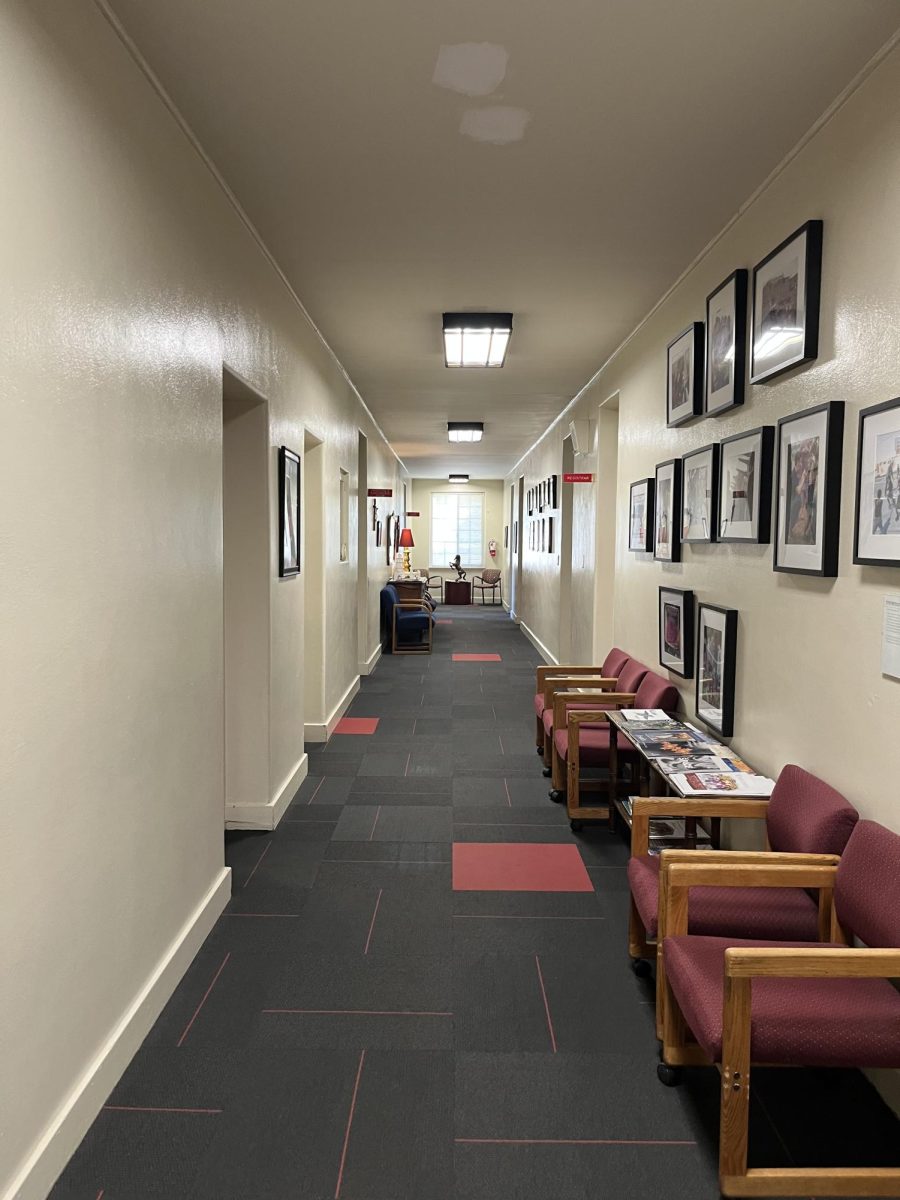By Eric Villanueva ’11
The Roundup
Five Brophy students scram

ble off a departing German tram and walk past the sign for the Jesuit retreat center Henrich Pesch Haus.
These students are not Brophy’s European Jesuit counterparts, but in fact Brophy students about to join an international conference on climate change.
Their names are Peter Ossowski ’11, Will Herding ’11, Kiefer Forseth ’10, Andrew McKee ’10 and myself, Eric Villanueva ’11, accompanied by Ms. Jennie Oleksak.
This is our legacy.
When we finally stopped at the tram station in Ludwigshaven, Germany—the final leg of our travels—we had travelled more than 5,000 miles in less than 16 hours.
Earlier, sitting in my middle seat in the bulky 747, I found myself shifting not in anxiety of missed work, diving into the black depths or to displace my overreaching neighbor, but in anticipation for 10 days of intercultural exchange on global climate change.
German moderator of the International Youth Academy and conference on climate change, Kai Stenull, said that study trips, intercultural debates, lectures by experts and simulations culminate in a “whole package.”
Students experience “something you can’t learn in textbooks or (in) classes at home,” Stenull said. “It’s different from seeing it on television or just reading it on the Internet.” We experienced our first look at the unprecedented quality of the trip and the power of German engineering at the solar, wind and biogas farms in the sleepy town of Moorbach and the state capital of Stuttgart.
The Germans respect their engineers as the country has pledged to make 18 percent of German energy from renewable energy sources by 2012.
In the fields of a vacant U.S. army base in Moorbach, wind turbines now stand more than 300 feet in the air, solemn guardians over acres of solar panels that extend toward the horizon.
The citizens of Moorbach joined a collaborative with renewable energy companies to bring back a purpose to the abandoned U.S. armament base.
Just like the citizens of Moorbach, the people of Stuttgart, home of the world-renowned luxury car company Mercedes Benz, have appreciated the splendors of innovation for more than a century.
In the hills above the old capital, bioengineers at the University of Stuttgart experiment with new technologies in biogas production, and have successfully tested the biogas in a 180 kilowatts per hour engine.
Down the winding roads into the city, the German-made Mercedes Benz dominates the pedestrian-clogged streets, even our tour bus was a Mercedes Benz. Though the trams offer cheaper, faster and cleaner transportation, Mercedes Benz defines Germans and their innovative disposition.
Now, the German car company presents the new E-class, which is planned to be released sometime next year. We learned that Mercedes Benz promises the chassis’s sleek design increases the car’s fuel efficiency.
If the German cars define the people, then the Germans are efficient and planet-friendly. More importantly, how do Americans’ carbon footprints and renewable energy resources size up to Germany and other European nations?
On the first day of the conference, we learned that America leaves the “Godzilla” print of global carbon footprints. As an average American teen, I produce 10,830 tons of carbon dioxide annually, which would take the carbon dioxide capturing power of 43 trees to offset.
Teens from Hungary, Ireland and Germany have carbon footprints less than 7,000 tons.
Stenull said that this astonishing figure makes America a “major actor” in the unfolding drama of climate change, and a key player in the fight against global warming.
“(America) has to change their policy,” Stenull said. “If not the rest of the world will not be able to combat climate change.”
Flying back home across the Atlantic, watching last month’s movies and eating bland-tasting airline food, Stenull’s words rang in my head like so many words from so many of last year’s Summit speakers. With its legacy of successful students and thought-provoking Summits, Brophy is so much a part of the fight against climate change.
But, as Principal Mr. Bob Ryan asked juniors in a start-of-the-year speech he gave the first Friday of school, “What legacy will you leave?”












